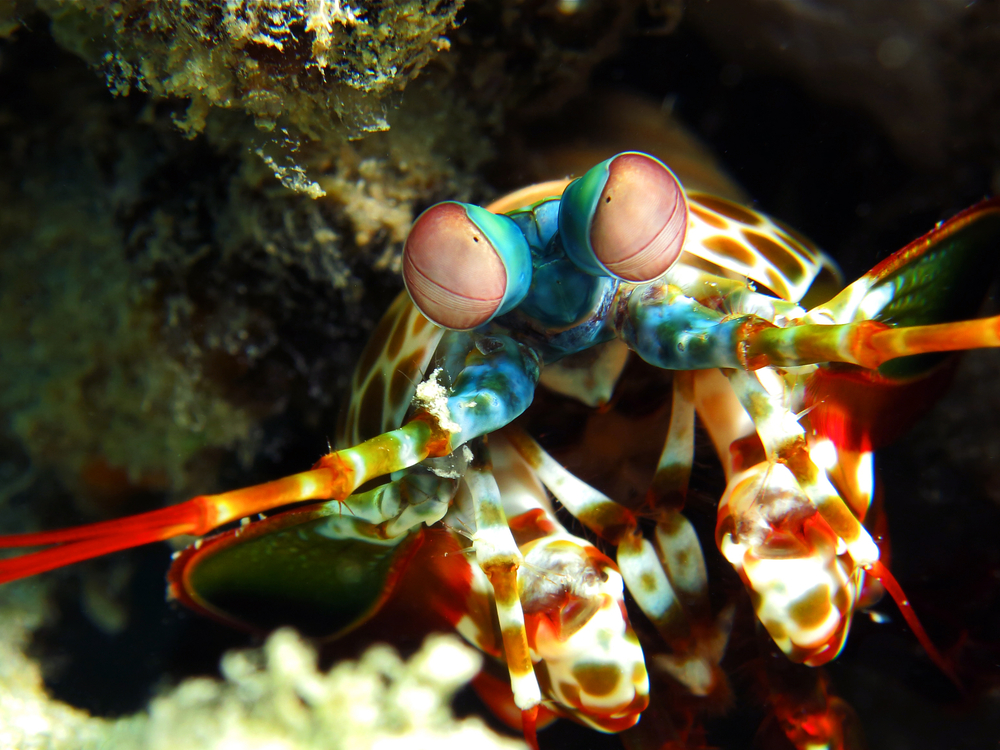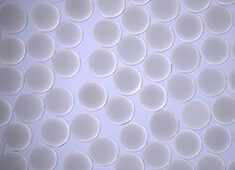
Scientists believe the unique structure of the mantis shrimp’s club could inspire new ultra-strong materials.
One of the ocean’s fiercest fighters may serve as the inspiration for a new wave of strong materials for airplanes and football helmets.
Researchers from the University of California Riverside (UCR) have identified a unique structure that wraps around the mantis shrimp’s club to protect itself from self-inflicted damage as it crushes hard-shelled prey. This discovery could lead to ultra-strong materials in the aerospace and sports industries.
Mantis shrimp or stomatopods are aggressive crustaceans known for killing their prey using a predatory strike that is among the fastest in the animal kingdom. The shrimp are dived into “spearers,” which attack soft-bodied prey using a harpoon-like structure and “smashers,” which crush hard-shelled prey using a hammer-like appendage called a dactyl club.
The researchers previously found that the dactyl club is a multi-regional composite made of mineralized chitin—the same material found in the shells of insects and crustaceans—arranged in a number of unique structures.
The exterior of the club serves as hard, crack-resistant coating that enables the mantis shrimp to inflict damage on its prey by transferring its momentum upon impact.
The interior of the club includes the periodic region, an energy-absorbing structure that dissipates cracks along a series of long helicoidal fibers and the striated region, which is comprises a series of highly aligned fibers that wrap around the club and stop it from expanding upon impact.
“We believe the role of the fiber-reinforced striated region in the smasher’s club is much like the hand wrap used by boxers when they fight: to compress the club and prevent catastrophic cracking,” David Kisailus, the Winston Chung Endowed Professor in Energy Innovation in UCR’s Marlan and Rosemary Bourns College of Engineering, said in a statement. “Together, the impact, periodic and striated regions form a club of incredible strength, durability and impact resistance.”
According to Kisailus, a similar striated architectural element is seen in the spearer, where it is believed to prevent the long, thin barbs from becoming deformed during penetrating strikes. This likely enabled the advent of the more recently evolved smasher and its biological hammer—a diversification that coincided with the appearance of hard-shelled prey with more sophisticated defenses.
Smashers carry out rapid underwater attacks at up to 23 meters per second, which shears the water, creating cavitation—bubbles that implode—to yield a secondary impact on the target. The profile of the club, together with an adjoining region called the propodus, is a hydrodynamic teardrop design that reduces resistance due to drag.
“Interestingly, aerodynamic cycling helmets and golf clubs already incorporate this design, suggesting that nature was one step ahead of humans in achieving high performance structures,” Kisailus said. “The natural world can provide many more design cues that will enable us to develop high performance synthetic materials.”
The team also found a similar structure in the tibia of a praying mantis, indicating that biology has utilized the design for similar functions.
The study was published in Advanced Materials.




